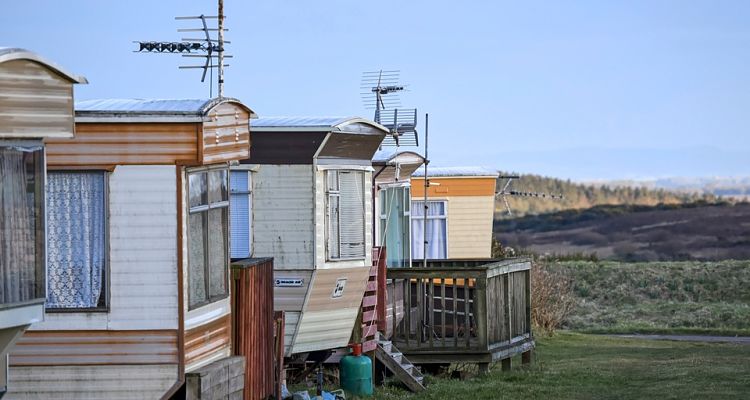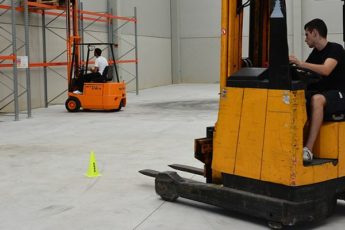
Mobile home living is becoming a popular choice for many in the U.S., redefining the traditional concept of home ownership. Unlike the typical brick-and-mortar houses, mobile homes offer a unique blend of affordability and flexibility. These homes, which you can move from place to place, appeal to a wide range of people – from first-time homebuyers looking for a cost-effective entry into the housing market, to retirees seeking a downsizing option that doesn’t skimp on comfort.
The rise in mobile home living in the U.S. isn’t just a trend; it’s a response to the changing needs and economic realities of modern living. For those on a tight budget, mobile homes present a viable alternative to the often prohibitive costs of traditional housing. This affordability isn’t about cutting corners on quality, but rather, it’s about smart, efficient living spaces designed for the contemporary lifestyle. Moreover, these homes foster a sense of community, often located in parks where neighbors are close-knit and communal activities are a part of everyday life.
In this guide, you’ll discover not only the practical and financial benefits of mobile home living but also its challenges. This insight aims to equip you with the knowledge to make an informed decision, whether you’re a young family starting out, a retiree looking for a cozy community, or anyone in between. With mobile homes, the promise is clear: a life less ordinary, yet filled with the comforts and securities of a place you can call home.
Understanding Mobile Homes
Mobile Home Types and Features
Mobile homes, often seen as a gateway to homeownership, come in various types, each catering to different lifestyle needs. The average lifespan of a well-maintained mobile home is 30-55 years, comparable to traditional homes. Let’s delve into the world of manufactured homes, park models, and tiny homes, exploring what sets them apart.
Manufactured Homes – The Spacious Choice: Manufactured homes are the most common type of mobile homes. They come in single or multi-section units and are built entirely in a factory before being transported to a site. These homes are known for their spaciousness and variety in design, often resembling traditional houses. They are a great fit for families or anyone seeking a balance between affordability and comfort. The key here is customization; you can often choose layouts and finishes to match your style.
Park Models – Compact Community Living: Park models are smaller, usually under 400 square feet, and are designed for seasonal or temporary living. These homes are perfect for retirees or those seeking a vacation home. Often found in specialized parks, they offer a sense of community. The charm of park models lies in their efficiency and the ease with which they blend into cozy, communal settings. They are the go-to choice for those who prioritize community interaction and a simpler lifestyle.
Tiny Homes – The Minimalist Trend: Tiny homes have gained popularity for their minimalist approach. Typically less than 400 square feet, these homes push the boundaries of compact living. Ideal for individuals or couples, tiny homes are about decluttering life and focusing on essentials. They are highly customizable, eco-friendly, and can be placed on various sites, offering a sense of adventure and freedom. Tiny homes appeal to those yearning for a nomadic lifestyle or a smaller environmental footprint.
The construction of mobile homes has evolved significantly, with recent technological advancements improving their durability and energy efficiency. Modern mobile homes are now often built with eco-friendly materials, smart home technology, and improved insulation, which enhances their overall quality and comfort. This shift not only addresses concerns about construction standards but also positions mobile homes as a forward-thinking choice for environmentally conscious consumers.
Cost Analysis
When considering a move to a mobile home, understanding the financial aspect is essential. Let’s break down the costs: purchase price, lot rent, utilities, and maintenance. Mobile homes can appreciate in value, especially in high-demand areas. Recent trends show a 3-5% annual increase in some regions. This comparison with traditional housing will provide you with a clear picture.
Starting with the purchase price, mobile homes offer significant savings. Mobile homes cost 20-35% less per square foot than traditional homes. Prices vary, but they are often much lower than standard houses. For example, a new manufactured home might cost between $50,000 and $100,000, depending on size and amenities. In contrast, the median price for a traditional house in the U.S. can exceed $500,000. This price difference makes mobile homes an attractive option for first-time buyers or those on a tight budget.
Next, consider the lot rent. If you don’t own the land, you’ll pay rent for the space your mobile home occupies. This cost varies widely, from $300 to $1,000 monthly, based on location and park amenities. While this adds to your monthly expenses, it’s often less than property taxes and HOA fees associated with traditional homeownership.
Utilities in a mobile home can be more affordable due to the smaller space. Heating, cooling, and electricity are generally lower, saving you money each month. However, it’s important to note that older mobile homes might not be as energy-efficient, which could increase these costs.
Maintenance costs for mobile homes are also typically lower. Their compact size and simpler construction mean fewer expenses for repairs and upkeep. Traditional homes, with their larger size and complexity, often have higher maintenance costs.
Mobile Home Communities
In the heart of mobile home living lies the essence of community. Here, we delve into the world of mobile home communities, uncovering the layers of amenities and social dynamics that make this lifestyle unique.
Community Amenities
Mobile home communities often surprise newcomers with their range of amenities, designed to enhance the quality of life. Picture this: a central clubhouse, often the hub of activity, where residents gather for events and socializing. These clubhouses frequently feature amenities like fitness centers, swimming pools, and spaces for community gatherings. Imagine starting your day with a refreshing swim or an invigorating workout, just steps from your home.
Beyond the clubhouse, many communities offer additional perks. Playgrounds for children, picnic areas for family gatherings, and even dedicated spaces for hobbies and crafts are common. Some upscale communities go a step further, offering tennis courts, walking trails, and even golf courses. These amenities not only provide convenience and leisure but also foster a sense of belonging among residents. They’re not just places to live; they’re spaces to thrive and connect.
Community Dynamics
Now, let’s explore the social aspects of these communities. Mobile home living often cultivates a close-knit environment, where neighbors aren’t just familiar faces but part of an extended family. This sense of community is a cornerstone of the lifestyle. Regular community events, from potlucks to holiday celebrations, create opportunities for residents to bond and build lasting friendships.
The diversity in these communities is also noteworthy. From young families starting out to retirees enjoying their golden years, the demographic mix adds a rich layer to the social fabric. For those moving as single individuals, mobile home communities offer a unique blend of independence and community support, ideal for solo living. This diversity brings together a wealth of experiences and stories, making every interaction an opportunity to learn and grow.
Financial Implications
While the affordability of mobile homes is a key attraction, potential buyers should be aware of hidden costs that might not be immediately apparent. For instance, while the purchase price is lower, financing a mobile home can be different from a traditional mortgage. Interest rates for mobile home loans, especially when the land isn’t owned, can be higher, impacting the overall affordability.
Transportation and installation are other often-overlooked expenses. Moving a mobile home to a new location involves logistical costs that can quickly add up. Additionally, setting up utilities in a new park or land can come with its own set of expenses, from connection fees to compliance with local regulations.
Insurance costs for mobile homes can also differ from traditional homes. Due to their construction and mobility, insurance premiums might be higher, and finding the right coverage requires careful research. It’s crucial for potential buyers to factor in these hidden costs to get a complete picture of the financial commitment involved.
Benefits of Mobile Home Living
In the world of mobile home living, downsizing and embracing minimalism offer a transformative experience, especially for retirees and those inclined towards a simpler lifestyle. This section delves into the tangible benefits of such a lifestyle shift, supported by real-life examples that illuminate the journey from a traditional home to a mobile home setting.
For retirees and minimalists, downsizing to a mobile home is not just about reducing physical space; it’s a redefinition of living. Unlike downsizing into a condo, moving into a mobile home offers unique financial benefits, including lower property taxes and reduced upkeep costs. It’s about shedding the unnecessary and focusing on what truly matters. In a mobile home, every inch of space is thoughtfully utilized, encouraging a more organized and clutter-free life. This shift often leads to reduced stress and a heightened sense of freedom. Financially, it’s a smart move too. With less space to maintain and lower utility costs, the savings can be substantial, allowing for a more comfortable retirement or the financial flexibility to pursue passions and hobbies.
Customization and Sustainability
Customization in mobile homes is a game-changer. Unlike traditional houses, where alterations can be costly and complex, mobile homes offer a canvas for creativity and personal expression. Imagine tailoring your living space to your exact needs and style preferences. From selecting floor plans that maximize space efficiency to choosing interior designs that reflect your personal taste, the possibilities are endless. This flexibility is particularly appealing to those who value individuality in their living spaces. It’s not just about having a place to live; it’s about creating a home that truly resonates with your personal identity.
Sustainability is another key advantage of mobile homes. In a world increasingly conscious of environmental impact, mobile homes present a more eco-friendly living option. Their smaller size translates to less energy consumption for heating and cooling, making them inherently more efficient than larger, traditional homes. Moreover, many modern mobile homes are designed with sustainability in mind, featuring energy-efficient appliances, sustainable materials, and even options for solar panel installations. This not only reduces the ecological footprint but also leads to significant savings on utility bills. For those looking to live a greener lifestyle without sacrificing comfort, mobile homes offer a compelling solution.
Drawbacks and Challenges
While mobile home living offers numerous benefits, like affordability and community spirit, it’s important to consider some challenges too. Let’s dive into these aspects to give you a well-rounded view.
Weather-Related Risks
Living in a mobile home can be a bit like holding an umbrella in a storm. These homes, while cozy, face higher risks during extreme weather events. Unlike traditional homes, mobile homes are not always anchored to a solid foundation, making them more vulnerable to high winds or severe storms. It’s like being in a boat during rough seas – you need to be prepared. To mitigate these risks, it’s crucial to have a solid emergency plan and stay informed about weather conditions.
Quality and Construction
When it comes to construction, mobile homes and traditional houses are like apples and oranges. Mobile homes are often built with different standards, focusing on efficiency and cost-effectiveness. This doesn’t mean they’re low quality, but they might not match the robustness of a brick-and-mortar house. It’s like comparing a sturdy oak tree to a flexible willow – both have their strengths, but they react differently to stress. For potential buyers, understanding these construction differences is key to setting the right expectations.
Space and Storage Limitations
Think of mobile homes as a game of Tetris – you need to fit your life into a smaller space creatively. These homes often come with limited storage, challenging residents to think outside the box. It’s about making the most of every nook and cranny, using multi-functional furniture, and embracing a minimalist lifestyle. It’s like packing a suitcase for a long trip; you need to be selective and organized.
Financing and Insurance Hurdles
Securing financing and insurance for a mobile home can sometimes feel like running an obstacle course. Traditional mortgage options might not always be available, and insurance premiums can be higher due to the perceived risks associated with mobile homes. It’s important to do your homework and explore all your options. Think of it as a treasure hunt – with the right map and a bit of persistence, you can find the best deals that suit your needs.
Specific Considerations
This section explores the best communities for different demographics, focusing on families, seniors, and pet owners, each with unique requirements and aspirations. Over 22 million Americans live in mobile homes, with a significant increase in the 55+ age group choosing this lifestyle.
Families
When it comes to families, especially those with children, the ideal mobile home community is one that balances safety, space, and social opportunities. Look for communities that offer outdoor space for kids to play, perhaps with
playgrounds or sports facilities. Safety is paramount, so communities with well-lit streets and a neighborhood watch program are desirable. Additionally, consider the proximity to schools and educational resources. Some communities even organize family-friendly events and activities, fostering a sense of belonging and offering opportunities for children and parents to connect with others.
Seniors
For retirees or older adults, a community that offers peace, convenience, and accessibility is key. Many senior-focused mobile home communities provide amenities like clubhouses, health and wellness programs, and social clubs tailored to a more relaxed lifestyle. These communities often have on-site management and maintenance staff, ensuring a hassle-free living experience. Accessibility features such as ramps and easy-to-navigate layouts are also important. The social aspect is crucial too, as these communities often host events and gatherings, allowing residents to form close-knit bonds and support networks.
Pet Owners
Pet-friendly communities are a must for animal lovers. These communities not only allow pets but are designed with them in mind. Look for features like dog parks, walking trails, and pet waste stations. Some communities even offer pet-centric events and services, such as grooming stations or pet-sitting networks. It’s also important to check the community’s pet policy regarding size and breed restrictions to ensure it aligns with your furry friend’s needs.
Downsizing into a Mobile Home
Downsizing to a mobile home is like fitting your life into a cozier space without losing the essence of what makes it home. Start by assessing your belongings. Ask yourself, “Do I need this?” If it’s not a resounding yes, it might be time to let go. This process isn’t just about physical items; it’s a mental shift towards valuing experiences over possessions. It’s surprising how liberating it feels to unburden yourself from things you don’t need. In a mobile home, organizing your kitchen space with multi-functional appliances and storage solutions can significantly enhance your living experience The key is to focus on comfort. Choose furniture that serves multiple purposes and fits well in smaller spaces. Remember, downsizing doesn’t mean downgrading your lifestyle; it’s about creating a more focused and efficient living space.
Lifestyle Adjustments
Adapting to a mobile home means embracing a new way of living. It’s like learning a new dance; you adjust your steps to the rhythm of compact living. One strategy is to fully use vertical space. Shelves and hanging storage can be your best friends, turning walls into storage goldmines. Embrace the outdoors. With a smaller indoor area, parks and community spaces become extensions of your living room. It’s also about community. In a mobile home park, your neighbors are closer, which can lead to stronger community ties. Think of it as a chance to build new relationships and engage in community activities.
Organizing and Decluttering
Efficient organization in a mobile home is an art. It’s about making the most of every inch. Use storage solutions that are as aesthetic as they are functional. Baskets, bins, and hidden compartments can turn clutter into neatness. Labeling is a small step that makes a big difference. Knowing exactly where things are saves time and reduces stress. Also, consider the flow of your space. Arrange your furniture and belongings in a way that allows easy movement and creates an open, airy feel. It’s not just about organizing things; it’s about organizing life in a way that brings peace and joy.
Relocation Process for Moving into a Mobile Home
Before you start packing boxes, it’s crucial to have a plan. Moving into a mobile home involves unique considerations. Here’s a checklist to ensure you’re ready:
Pre-Move Checklist
- Budget Planning: Calculate your moving expenses, including transportation, setup costs, and any immediate repairs or upgrades.
- Sort and Declutter: Mobile homes offer cozy living spaces. This means you might need to downsize your belongings. Decide what’s essential and what can be donated or sold.
- Research Moving Companies: Some movers specialize in mobile homes. Find a company with good reviews and reasonable rates.
- Change of Address: Notify the post office, banks, and other important institutions about your move.
- Utility Setup: Arrange for utilities like water, electricity, and internet to be connected in your new home.
- Insurance: Mobile homes have specific insurance needs. Make sure you have the right coverage before moving in.
Checklist Before Moving into Your Mobile Home
Once you’ve found your perfect mobile home, inspect it thoroughly:
- Structure: Check for any signs of damage, especially in the roof, walls, and flooring.
- Plumbing and Electrical Systems: Ensure all faucets, toilets, lights, and electrical outlets are functioning.
- Heating and Cooling: Test the HVAC system. Mobile homes can have different heating and cooling needs.
- Windows and Doors: Look for drafts or leaks. Proper insulation is key in a mobile home.
- Safety Features: Smoke detectors and fire extinguishers should be in place and working.
Step-by-Step Guide on Moving into a Mobile Home
- Finalize Your Purchase or Rental: Complete all paperwork and financial transactions. Ensure you understand the terms, especially if you’re renting a lot in a mobile home park.
- Plan Your Move-In Date: Coordinate with the moving company and the mobile home park management. Some parks have specific move-in rules.
- Packing: Use this time to pack efficiently. Label boxes by room for easier unpacking.
- Moving Day: Supervise the movers, especially when they handle large furniture or delicate items. Ensure everything is securely packed and loaded.
- Settling In: Start by arranging your furniture and then unpack boxes. This helps you visualize and organize your space effectively.
- Meet the Neighbors: Introduce yourself to the community. Many mobile home parks have a strong sense of community, and getting to know your neighbors can be both helpful and enjoyable.
- Explore the Area: Familiarize yourself with the local amenities, like grocery stores, medical facilities, and parks. This will help you feel more at home.
Government Assistance for Mobile Home Buyers and Renters
For those looking to purchase a mobile home, various federal and state programs offer financial assistance. One notable example is the HUD’s Title I program, which provides loans for buying or refinancing mobile homes. These loans can cover the home itself, the lot, or both. For buyers who own their land, this program can be a lifeline, making the dream of homeownership more attainable. It’s like finding a key to a door you thought was locked, opening up new possibilities for affordable living.
For renters, assistance comes in different forms. Programs like Section 8 housing vouchers, administered by local Public Housing Agencies (PHAs), can be used for renting mobile homes. This flexibility allows individuals and families on a tight budget to choose mobile home living as a viable option. It’s more like having a safety net, ensuring that your housing costs remain manageable. Additionally, some states offer specific programs for mobile home park residents, providing rent subsidies or assistance with relocation. These programs acknowledge the unique aspects of mobile home living, tailoring support to fit these needs.
Legal and Regulatory Aspects
It’s not just about picking a cozy spot; it’s about understanding the legal landscape that shapes your ownership. In many states, mobile homes are treated differently from traditional houses, especially when they’re located in parks. You might own the home itself, but often, the land it sits on is rented. This setup can affect everything from taxes to your rights as a homeowner. It’s essential to get familiar with these laws in your state. They dictate what you can and can’t do with your property, and understanding them is key to making the most of your mobile home experience.
Dealing with Homeowners’ Associations
Now, let’s talk about navigating the waters of homeowners’ associations (HOAs) in mobile home parks. It’s a bit like joining a new club with its rules to follow and a community to fit into. These associations manage common areas and set guidelines for residents. They’re there to maintain a harmonious community, but sometimes, their rules can feel restrictive. It’s crucial to understand these rules before you move in. They can cover anything from the color of your home to the types of plants in your garden. But it’s not all about restrictions. HOAs often organize community events and maintain amenities, making life in a mobile home park more enjoyable. Remember, a good relationship with your HOA can make your mobile home living experience smoother and more pleasant.
Emotional and Psychological Aspects of Moving
Moving to a mobile home can be an emotional rollercoaster. It’s normal to feel a mix of excitement and apprehension. Downsizing often means parting with possessions that have been part of your life for years. It’s not just about letting go of things, but also about moving away from a familiar lifestyle. Acknowledge these feelings. Talk about them with friends or family members. Sometimes, just voicing your concerns can be incredibly cathartic.
Embrace the psychological benefits too. This move is a chance to redefine your life, to focus on what’s truly important. It’s about creating a space that aligns with your current values and aspirations. The simplicity of a mobile home can lead to a less cluttered and more peaceful mind. As you settle into your new home, you’ll likely discover a sense of freedom and clarity. This isn’t just a change of address; it’s a step towards a new way of living that prioritizes well-being and personal fulfillment.
Community Support and Social Responsibility Initiatives
Beyond the individual benefits of mobile home living, there’s a growing trend of community support and social responsibility initiatives within these communities. Many mobile home parks are now engaging in programs like community gardens, local food drives, and sustainability projects. These initiatives not only enhance the living experience but also foster a sense of collective responsibility and community engagement. For potential residents, this aspect of mobile home living offers an opportunity to be part of a community that values social impact and collective well-being.





Be careful with the armoires. We moved one into a mobile home and nearly sent it throught the floor. We tried to warn the customer!
Modern closets can be built into the walls of the house during construction so that they take up no apparent space in the bedroom, or they can be a large, free-standing piece of furniture designed for clothing storage, in which case they are often called a wardrobe or armoire. Closets are often built under stairs, thereby using awkward space that would otherwise go unused.,
Check you later
“Expert mobile home movers would advice that you position your larger and important items in the home before the smaller items.” Good point. We have seen many folks simply not using their home preparation time rightly and therefor delay the whole process. We didn’t put that disclaim on our site: http://www.mobilehomesell.com but pretty sure we will add it now. Thanks.